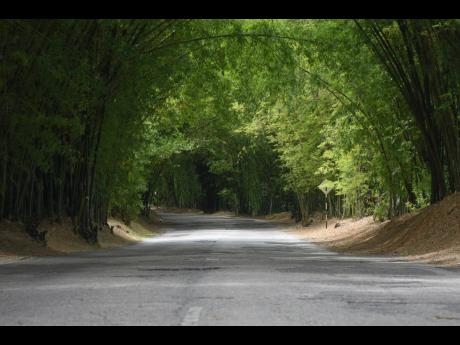Bamboo housing research to get back on track
After a two-year pause on the buildout of factory space in White Marl, St Catherine, to facilitate research into bamboo housing, Chairman of the Bamboo Industry Association of Jamaica, BIAJ, Robert Rainford says they are now months away from...
After a two-year pause on the buildout of factory space in White Marl, St Catherine, to facilitate research into bamboo housing, Chairman of the Bamboo Industry Association of Jamaica, BIAJ, Robert Rainford says they are now months away from recruiting a local research lead to get the project off the ground.
The BIAJ is also weighing the construction of a manufacturing plant to convert bamboo strips into plywood. But that plan is subject to feasibility assessments. The alternative is to export the local bamboo strips and reimport the finished product.
“We are still assessing what would be the best option for when we get to that stage of the project,” Rainford said.
In 2020, the Bureau of Standards Jamaica announced that it and BIAJ would be assessing the viability of bamboo housing in Jamaica, using some $54 million in funding from the National Housing Trust.
So far, the site for the test houses has been selected at White Marl, and the funding from NHT is still available for drawdown. The institutions are being assisted by a civil engineering professor at Pittsburgh University in the United States, Kent Harries, to do fieldwork at farms across Jamaica to test the suitability of various bamboo species for the venture.
The project partners have also teamed up with the University of Technology, Jamaica, Forestry Department and the HEART/NSTA Trust for lab testing of bamboo materials, training, and development of a bamboo technology curriculum. Bamboo housing designs are also being studied.
Westmoreland-based company Bamboo Bio-Products has also been engaged to plant acres of bamboo, starting with idle sugar lands at Frome Sugar Estate.
Bamboo is widely grown in Jamaica, but some of the parishes with the largest cover include St Elizabeth, Trewlawny, Westmoreland and St Mary. There are over 65,000 hectares of bamboo plants, Rainford said.
The bambusa vulgaris plant is said to be most suitable for housing construction. The BIAJ estimates that bamboo homes will cost two-thirds of what it takes to build a concrete structure.
Over the next three months, the association hopes to name a local research lead to work alongside Harries. Thereafter, it will seek to get bamboo material into the building code.
“We believe it’s best to have a local individual working alongside the professor, so that when he leaves there will be someone competent enough to carry on the project,” Rainford said.
BIAJ hopes to have the project fully active by August/September. The last phase involves the BIAJ erecting bamboo model homes on a service lot controlled by the NHT in Hellshire, St Catherine.
“Coming out of this, we want to construct one-bedroom, two-bedroom and three-bedroom split-level homes which potential homeowners can view. Once that’s done, the NHT will be able to recommend bamboo as another option in the building process,” Rainford said.
The first demonstration of what a house primarily made of bamboo looks like sits at the Denbigh Showground in Clarendon. It was constructed in 2014.

